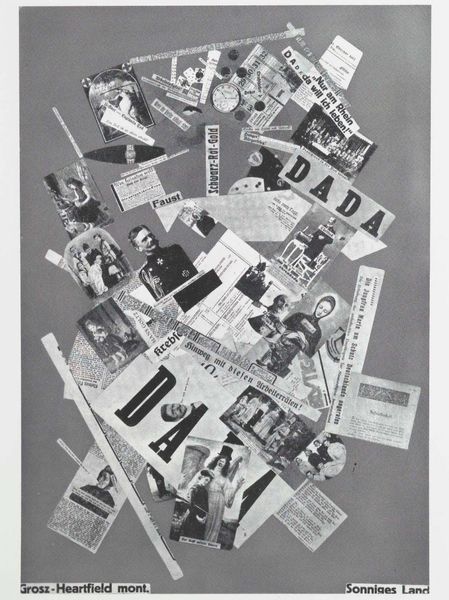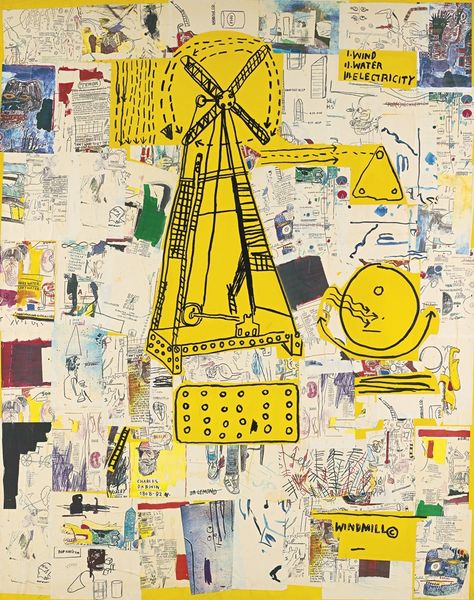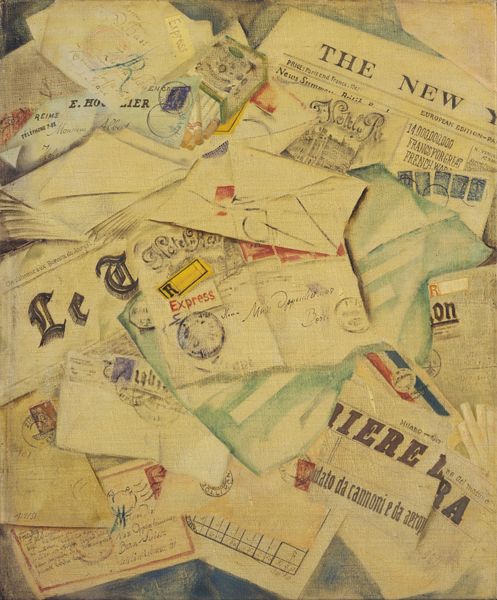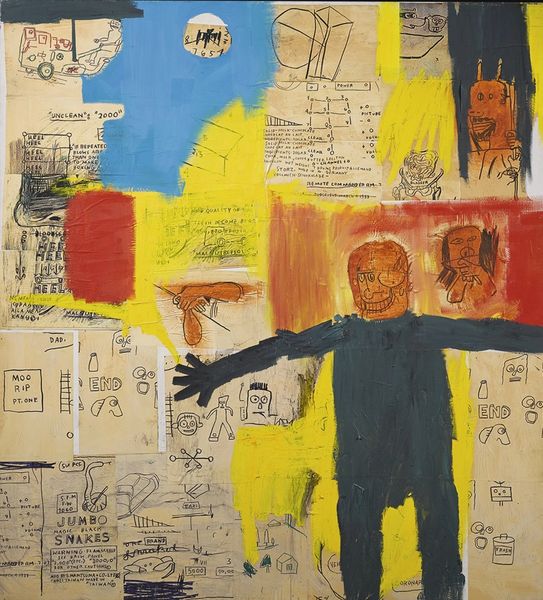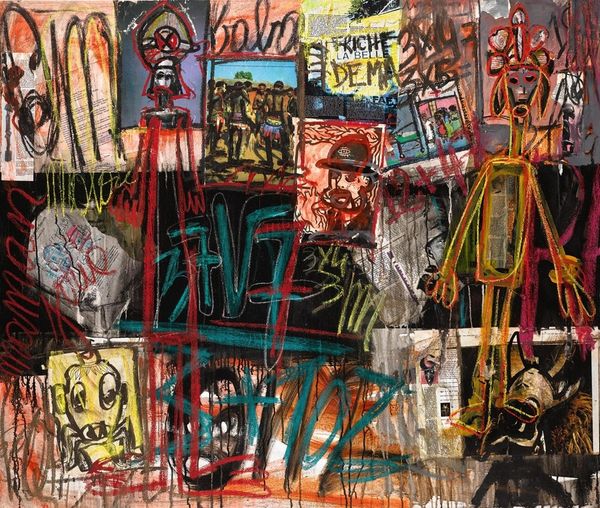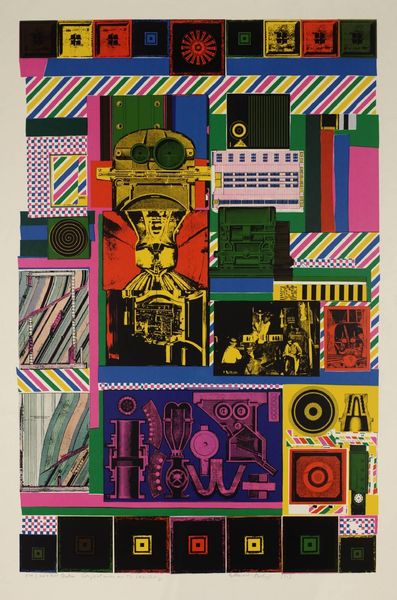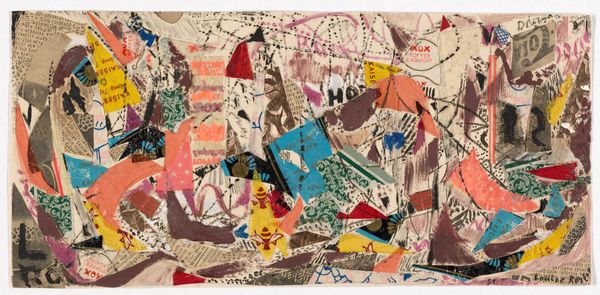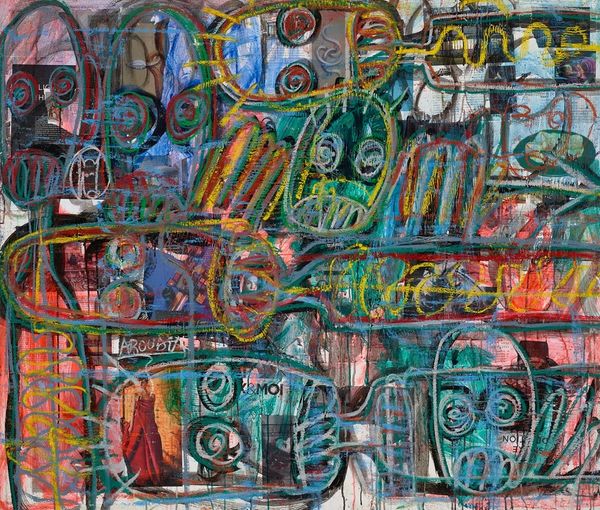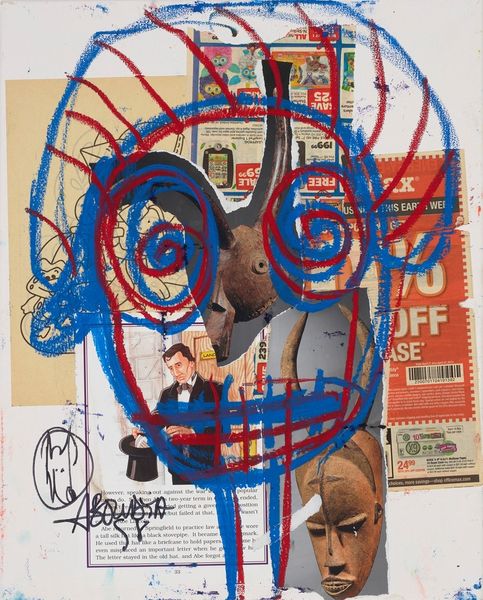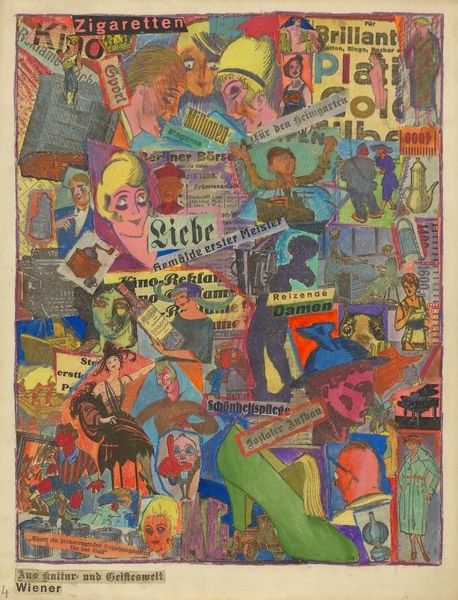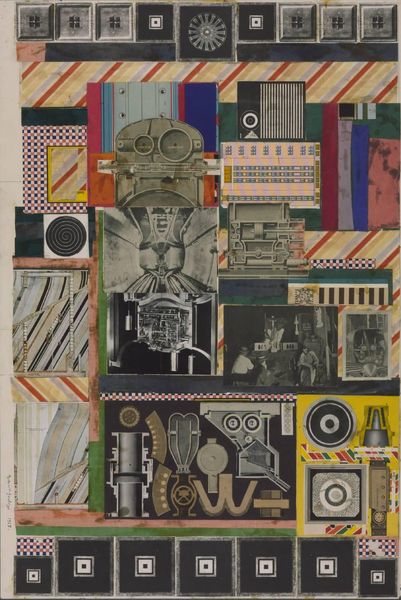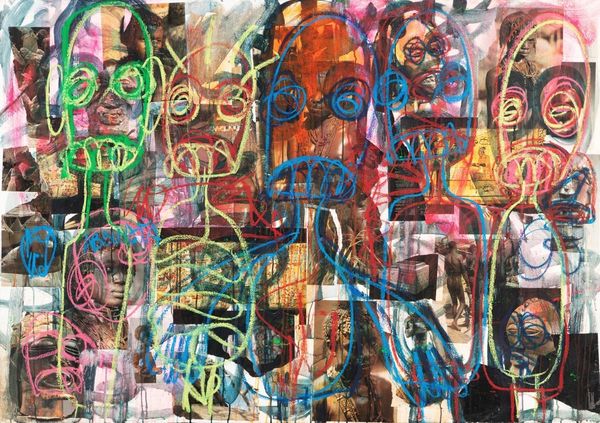
Copyright: Public Domain: Artvee
Curator: This striking collage, made with mixed media in 1938, is titled "Political collage" and created by Karl Wiener. The use of repurposed printed fragments makes quite an immediate impression. Editor: Yes, it does. My first thought is: chaos. The image is almost aggressively dense, packed with fragmented text and faces. The colours are muted overall, but those geometric shapes on the central skull pull your eye right in. It feels tense. Curator: The tension is definitely intended. The work deploys surrealist and expressionist techniques, particularly in the disjointed juxtaposition of images, to speak to the tumultuous political climate. Considering the looming threat of World War II, the choice of source material becomes quite pointed. Editor: Precisely. All these snippets of newspaper clippings, you can see the years '37, '38... bits about 'communism', 'Spain', along with visual cues to rising fascism. It’s a direct commentary on the materials used to construct narratives, especially within cityscapes undergoing these massive ideological shifts. Look how labour and political unrest manifest within the composition. Curator: Wiener employs art deco geometric stylization on figures alongside stark portraiture and caricature. It speaks to identity construction amid nationalistic fervor, raising questions around the human cost of ideological clashes through a modern lens. This is very evident in the depiction of a skeleton. It highlights the pervasiveness of death. Editor: Indeed, but more subtly than just the inclusion of death. The 'making' of it, the physical assembly—it mirrors how identities, especially national identity, are actively manufactured and consumed. Notice the different paper quality used. Wiener brings forward the economic conditions of newspaper production at this time. There are elements of the readymade there as well, shifting attention towards the social life of the work as a material object. Curator: Considering its themes, do you think "Political collage" achieves relevance in a contemporary dialogue about constructed social realities? Editor: Absolutely. By bringing materiality to the forefront, Wiener prompts us to consider labor. Furthermore, the politics, and economics of representation itself – which is a crucial message still today. Curator: A powerful collision of form and function that compels ongoing critical engagement.
Comments
No comments
Be the first to comment and join the conversation on the ultimate creative platform.
